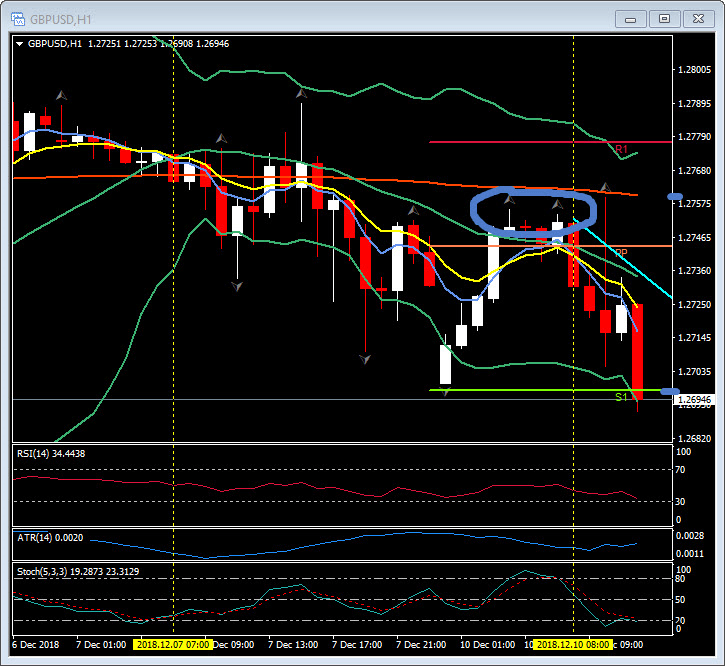GBPUSD, H1
The Pound continues to underperform the Dollar, which has driven a modest loss in Cable, to the lower 1.2700s. Markets are bracing for tomorrow’s Brexit vote in the UK Parliament, which the prime minister has affirmed will be taking place despite reports of it being delayed, and which is widely expected to see the government’s Brexit deal voted down. Labour, the Liberal Party, Northern Ireland’s DUP, Scotland’s SNP, and significant numbers of Conservative Party members (mostly from the Eurosceptic cabal, but also some Remainers) are all set to vote against it. If the deal is rejected, it would immediately create scope for multitude scenarios in the coming weeks depending on how big the defeat is.
The European Court of Justice (the much hated by Leavers ECJ) ruled today that the UK could indeed call off the Article 50 notice to exit from the EU any time before March 29, the current official exit date. The decision was expected after a court adviser already issued a similar opinion last week. Both sides had sought clarification on the issue, brought forward by pro-remainers in the U.K. and also contested by the EU, where officials feared that the right to unilaterally stop the withdrawal process could lead to an abuse of the process.
The raft of UK data today was also on the weak side with GDP confirmed at a glacial 0.1%, the Goods Trade Balance missed expectations by over 1.4 billion GBP and Manufacturing Production was worse than expected.
The spike in Cable to 1.2760, following the ECJ announcement, was short lived, with the pair trading below the 5-, 9- and 20-period moving averages on the H1 chart. Support sits at S1 under 1.2700 at 1.2697, with the daily pivot at 1.2744. The weak rally in the Asian session was capped by the 200-period moving average at 1.2760.
Disclaimer: Nothing in this communication contains, or should be considered as containing, an investment advice or an investment recommendation or a solicitation for the purpose of purchase or sale of any financial instrument.
Recommended Content
Editors’ Picks
AUD/USD could extend the recovery to 0.6500 and above

The enhanced risk appetite and the weakening of the Greenback enabled AUD/USD to build on the promising start to the week and trade closer to the key barrier at 0.6500 the figure ahead of key inflation figures in Australia.
EUR/USD now refocuses on the 200-day SMA

EUR/USD extended its positive momentum and rose above the 1.0700 yardstick, driven by the intense PMI-led retracement in the US Dollar as well as a prevailing risk-friendly environment in the FX universe.
Gold struggles around $2,325 despite broad US Dollar’s weakness

Gold reversed its direction and rose to the $2,320 area, erasing a large portion of its daily losses in the process. The benchmark 10-year US Treasury bond yield stays in the red below 4.6% following the weak US PMI data and supports XAU/USD.
Bitcoin price makes run for previous cycle highs as Morgan Stanley pushes BTC ETF exposure

Bitcoin (BTC) price strength continues to grow, three days after the fourth halving. Optimism continues to abound in the market as Bitcoiners envision a reclamation of previous cycle highs.
US versus the Eurozone: Inflation divergence causes monetary desynchronization

Historically there is a very close correlation between changes in US Treasury yields and German Bund yields. This is relevant at the current juncture, considering that the recent hawkish twist in the tone of the Federal Reserve might continue to push US long-term interest rates higher and put upward pressure on bond yields in the Eurozone.

